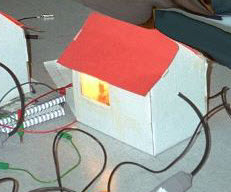Tools/Sensors: Difference between revisions
mNo edit summary |
mNo edit summary |
||
| Line 3: | Line 3: | ||
Sensors and {{tag|data loggers}} are in part ‘special’ because they can display fast changes and measure with precision. A temperature sensor linked to a live graph can give us a better insight into how a cup of coffee cools. Sensors also extend the range of things we can measure - from timing a falling mass to recording human pulse changes during a race. Importantly, a live display of a changing measurement can provide pupils with a tacit understanding for the changes they will investigate. | Sensors and {{tag|data loggers}} are in part ‘special’ because they can display fast changes and measure with precision. A temperature sensor linked to a live graph can give us a better insight into how a cup of coffee cools. Sensors also extend the range of things we can measure - from timing a falling mass to recording human pulse changes during a race. Importantly, a live display of a changing measurement can provide pupils with a tacit understanding for the changes they will investigate. | ||
An {{tag|accelerometer}} might give an insight into gravity by directly measuring it. Another sensor, called a {{tag|light gate}}, | An {{tag|accelerometer}} might give an insight into gravity by directly measuring it. Another sensor, called a {{tag|light gate}}, also measures acceleration but the result is derived from measuring distance and time. In the end you've measured the same parameter but by using a light gate, students go through a process which is very useful. (A further example may help: one type of breathing sensor 'integrates' chest movements to deliver a breathing rate. An anaesthetist would find this useful. Another type of breathing sensor shows you peaks where the chest has moved. To obtain the breathing rate, the student needs to count the peaks). | ||
<!-- ROGER TO FINISH In summary, the examples serve to highlight that getting your result automatically is not really the point of things. Technology brings whatever it brings. Some tools times design of teaching activity | |||
to access benefits from data logging may depend on . The idea that is key is that the benefits from using sensors are . | |||
Nearby are examples to evaluate what sensors bring to science. | Nearby are examples to evaluate what sensors bring to science. --> | ||
[[Category:Sensors]] | [[Category:Sensors]] | ||
Investigating a way to keep your house warm: | |||
[[File:Datalogging-model houses2.jpg]] | [[File:Datalogging-model houses2.jpg]] | ||
[[File:Datalogging-model houses1.jpg]] | |||
Revision as of 08:13, 6 September 2012
Sensors(i) are obviously tools for measuring in science, but why might they be better than regular tools? Are they more accurate; more convenient or less costly? On these points alone, they are certainly no better than an everyday device such as a thermometer.
Sensors and data loggers(i) are in part ‘special’ because they can display fast changes and measure with precision. A temperature sensor linked to a live graph can give us a better insight into how a cup of coffee cools. Sensors also extend the range of things we can measure - from timing a falling mass to recording human pulse changes during a race. Importantly, a live display of a changing measurement can provide pupils with a tacit understanding for the changes they will investigate.
An accelerometer(i) might give an insight into gravity by directly measuring it. Another sensor, called a light gate(i), also measures acceleration but the result is derived from measuring distance and time. In the end you've measured the same parameter but by using a light gate, students go through a process which is very useful. (A further example may help: one type of breathing sensor 'integrates' chest movements to deliver a breathing rate. An anaesthetist would find this useful. Another type of breathing sensor shows you peaks where the chest has moved. To obtain the breathing rate, the student needs to count the peaks).
Investigating a way to keep your house warm:


